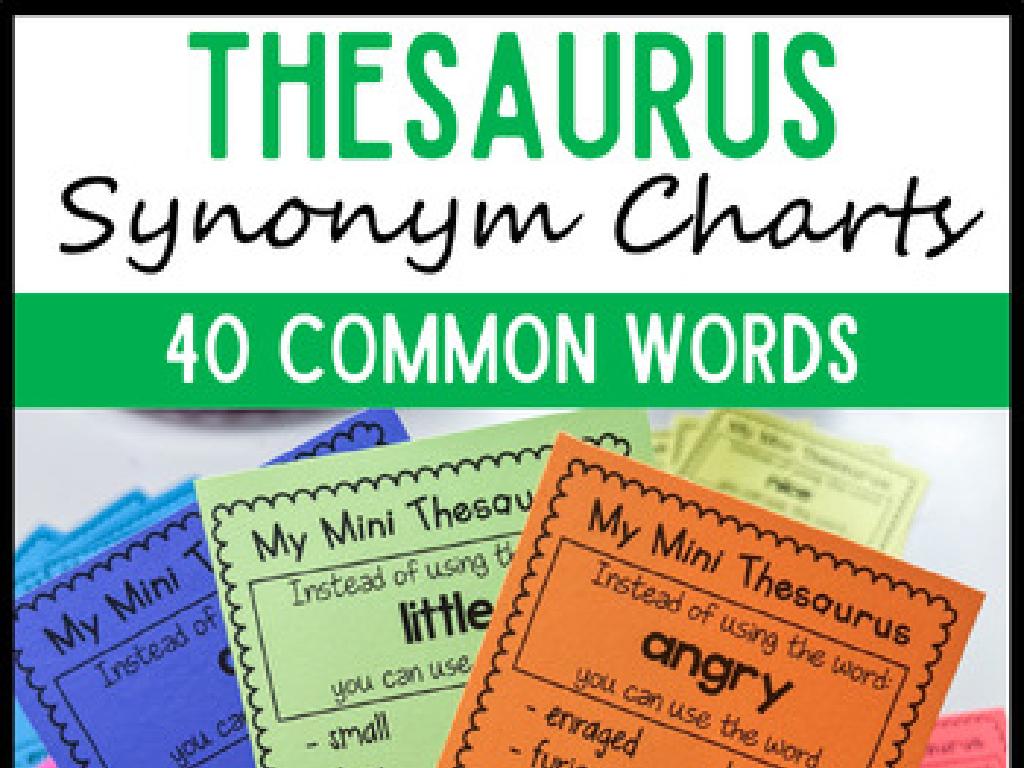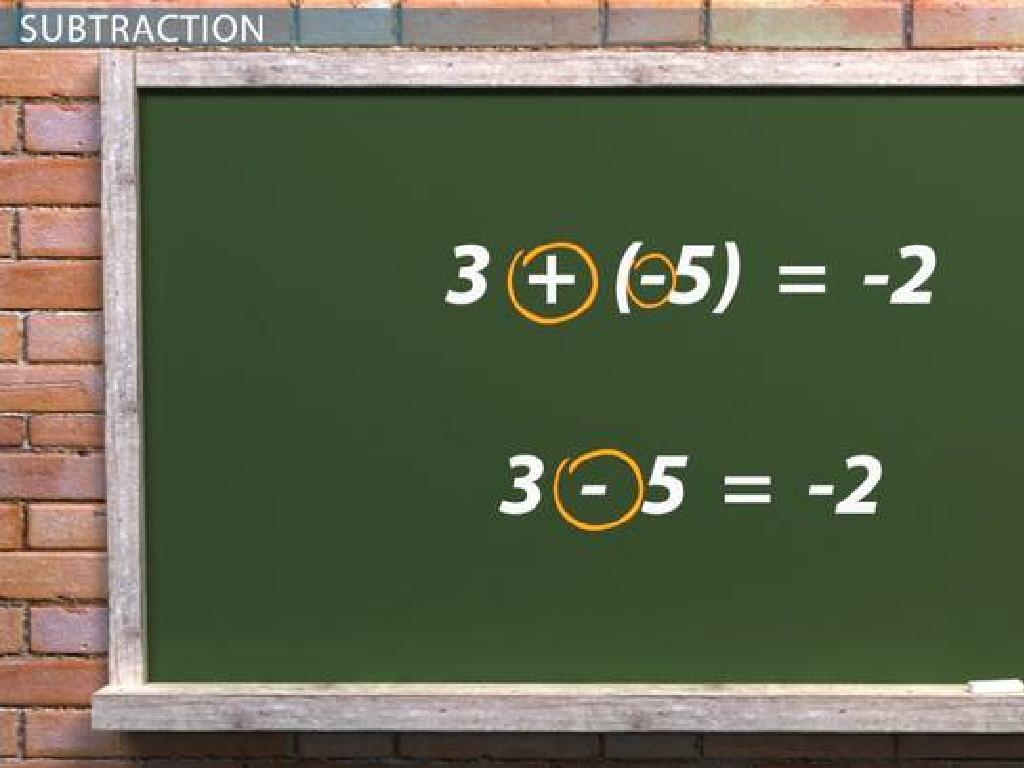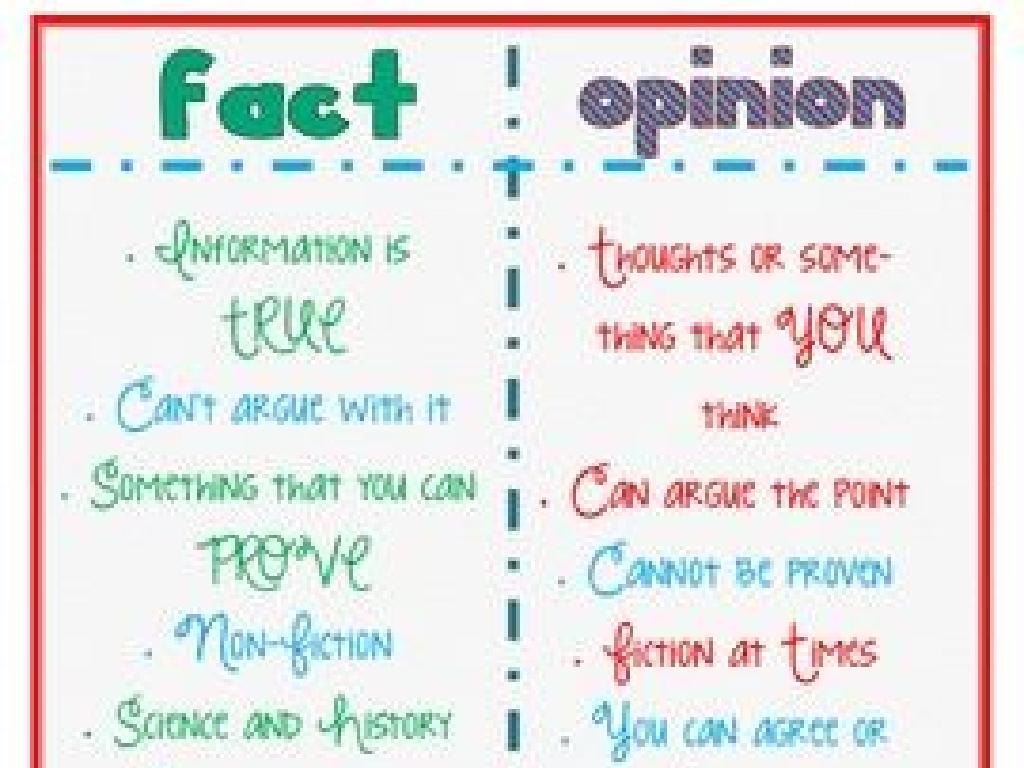Find The Area Of Complex Figures
Subject: Math
Grade: Third grade
Topic: Area
Please LOG IN to download the presentation. Access is available to registered users only.
View More Content
Exploring Area: Introduction
– What is area?
– Area is the space inside a shape.
– Importance of area calculation
– Helps us know how much space a shape covers.
– Real-life area examples
– Like a soccer field’s size or a house’s floor space.
– Practice finding area
|
Begin the lesson by explaining the concept of area as the amount of space inside a two-dimensional shape, such as a rectangle or circle. Emphasize why calculating area is useful in everyday life, for instance, when determining the amount of paint needed for a wall or the size of a carpet for a room. Provide relatable examples that resonate with third graders, like comparing the area of their desk with the classroom floor. Engage the class with simple area calculation activities, such as using tiles to cover a surface and counting them to find the area. This will help students visualize the concept and understand its practical applications.
Understanding Simple Shapes: Area
– Review area of squares
– Area is space inside a shape. Like how many tiles fit in a square!
– Review area of rectangles
– Area is how much space inside. How many tiles can you fit in your rectangle rug?
– Square area formula: A = s x s
– Rectangle area formula: A = l x w
|
Begin the lesson by reviewing the concept of area as the amount of space inside a shape, using familiar examples like tiles on a floor or a rug. Reinforce the understanding of area for squares and rectangles, which they have likely encountered before. Introduce the formula for the area of a square (A = side x side) and for a rectangle (A = length x width), ensuring to clarify that ‘s’ stands for the length of a side of a square, and ‘l’ and ‘w’ stand for the length and width of a rectangle, respectively. Use visual aids like grid paper to help students visualize the concept. Encourage students to practice with real-life examples and to prepare for learning how these formulas apply to finding the area of more complex figures.
Breaking Down Complex Figures into Simple Shapes
– Identify simple shapes within complex figures
– Look for triangles, squares, and rectangles in a complex shape
– Divide figures into squares and rectangles
– Use lines to break down a figure into familiar shapes
– Add areas of simple shapes together
– Calculate the area of each shape separately
– Find the total area of the figure
– Add all the areas to get the total area of the complex figure
|
This slide is aimed at teaching third-grade students how to approach finding the area of complex figures by breaking them down into simpler shapes they are familiar with, such as squares and rectangles. Start by guiding students to visually identify and outline the simpler shapes within a complex figure. Then, show them how to divide the figure into these shapes using straight lines. Once the figure is broken down, students can find the area of each simple shape using the formulas they have learned (length x width for rectangles, for example). The final step is to add the areas of these simple shapes to find the total area of the complex figure. Encourage students to practice with different complex shapes and to check their work by ensuring all areas of the complex figure are accounted for.
Calculating Area of Complex Figures
– Example: Area of an L-shape
– Break down the L-shape into rectangles
– Step-by-step calculation
– Measure lengths, calculate area for each part
– Practice problem to solve
– Try finding the area of a T-shape on your own
– Discuss our answers together
– We’ll review the solution as a class
|
Begin with an example of an L-shaped figure and demonstrate how to break it down into two rectangles. Explain how to measure the lengths of each rectangle and then use the formula length x width to calculate the area for each part. After the demonstration, provide a practice problem, such as finding the area of a T-shaped figure, for the students to solve. This activity encourages hands-on learning and helps students apply the concept of area to different shapes. Conclude by discussing the answers together, ensuring that students understand the steps and can confidently calculate the area of complex figures.
Class Activity: Area Art
– Create a complex figure
– Use squares and rectangles to design
– Calculate the total area
– Add areas of all shapes in your figure
– Share your figure
– Present your artwork to classmates
– Discuss the area with the class
– Explain how you calculated the area
|
This activity is designed to help students apply their knowledge of area in a creative and engaging way. Provide students with graph paper to assist them in creating figures made up of squares and rectangles. Encourage them to think about how complex figures can be broken down into simpler shapes whose area they know how to calculate. Once they’ve designed their figure and calculated the area, they should prepare to present their work to the class, explaining their creative process and how they determined the total area. This will reinforce their understanding and give them practice in mathematical communication. Possible variations for different students could include using different shapes, working in pairs, or creating figures that represent real-life objects.
Wrapping Up: Area of Complex Figures
– Review of today’s lesson
– Practice makes perfect
– Homework: Area Hunt at Home
– Find and measure areas of items like tables or rugs
– Share your discoveries
– Be ready to tell us about what you measured
|
As we conclude today’s lesson on finding the area of complex figures, it’s important to emphasize to the students the value of practice in mastering this skill. For homework, students are tasked with an ‘Area Hunt’ at home, where they will find various objects, such as tables, rugs, or even their beds, and calculate the area of these items. They should write down their findings and be prepared to discuss them in the next class. This activity will help reinforce their understanding of the concept of area and how it applies to everyday objects. Encourage creativity in the objects they choose to measure and remind them to bring their measurements to the next class for sharing and discussion.






